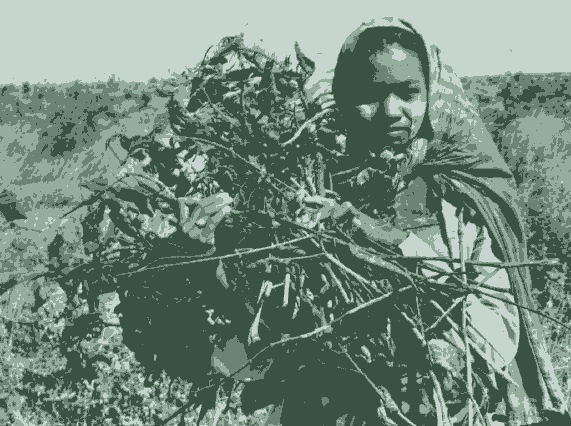



the long walk home-gathering fuelwood in Nepal
Women keep domestic animals in most societies. In Nepal they are responsible for finding fodder for the buffalo- a massive job because each animal can consume up to 40 tonnes of grass and leaves a year. Elsewhere women keep poultry, goats, pigs, rabbits and other small stock that play an important role in family nutrition, providing additional protein-rich foods such as meat and milk (and sometimes agricultural draught labour as well). In the western highlands of Costa Rica, women keep pigs which feed largely on garden produce, indigenous fruits and other tree products. Some 75 percent of women keep goats in Egypt and Jordan, and in many of the Sahel countries most of the goats (though rarely the cattle) are kept by women.
In many countries, trees are not valued primarily- as might be thought- for the fuel they provide. A survey in the White Nile Province of the Sudan, for example, found that fodder was the most prized tree product. Shade came second, fuel and poles only third.
Trees are especially valuable as a source of fodder because they can often provide it when other sources are scarce- typically at the end of a dry season or the beginning of a wet one. Acacia albida, which is grown in many parts of Africa in or around cultivated fields, scores on both counts. It produces pods late in the dry season, and drops its leaves early in the wet one. As a result, it does not shade crops at the critical stage of their growth yet provides sustenance for animals when little else is available. In areas where fodder collection is the responsibility of women, such trees play a critical role. The subtle effects all this may have on food production are only beginning to be appreciated. Better fodder means stronger draught animals, and better cultivated land. Crops also benefit from the humus provided by fallen leaves and pods, and the nitrogen that leguminous trees make available to the soil.
|
|
collecting leaves for animal litter (left) and cutting fodder (above), both in Nepal
At critical times in the agricultural year, fodder trees are invaluable. In the semiarid zones of Kenya, pigeon peas (Cajanus cajan), a woody perennial crop, provide both fuelwood and fodder during the critical first two weeks of planting. While men may have the time to graze stock on relatively distant common land, fodder trees grown close to the homestead enable women to raise additional livestock. In the Himalayas, such trees are reserved for use during times of peak labour demand such as rice transplanting.